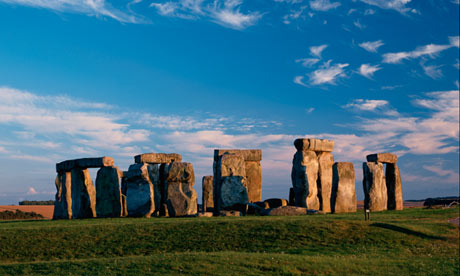Stonehenge:
a digital laser scan has revealed tool marks from 4,500 years ago, and
graffiti made by Victorian visitors. Photograph: Yoshihiro Takada/Corbis
The first complete 3D laser scan of the stone circle has also revealed tool marks made 4,500 years ago, scores of little axehead graffiti added when the enormous slabs were already 1,000 years old, and damage and graffiti contributed by Georgian and Victorian visitors.
The survey, carried out for English Heritage, exposes numerous details now invisible to the naked eye and will be used in displays for the long-awaited new visitor centre, due to open late next year. It shows the stones in unprecedented precision, from the double-decker bus height sarsens from Salisbury Plain that give the monument its unmistakable profile, to the smaller bluestones brought from west Wales by means still hotly debated, and the stumps of stones that have almost been destroyed.
Read the rest of this article...

No comments:
Post a Comment
Note: Only a member of this blog may post a comment.